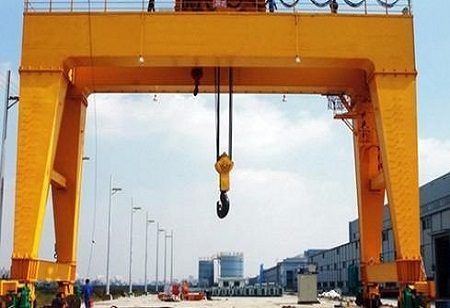
Introduction
EOT (Electric Overhead Traveling) cranes are essential in various industries, providing efficient and reliable solutions for lifting and transporting heavy loads. Whether in manufacturing, construction, or logistics, EOT cranes streamline operations and enhance productivity. In this blog, we will delve into the details of EOT cranes, exploring their types, components, applications, and benefits.
What is an EOT Crane?
An EOT crane, also known as an overhead crane, is a type of crane that travels along overhead rails or tracks. It consists of a hoist and trolley that move horizontally along a bridge, which itself moves along a set of rails fixed on a runway. This setup allows the crane to cover a large rectangular area, making it highly versatile for indoor use.
Types of EOT Cranes
- Single Girder EOT Cranes: These cranes have one main bridge girder supported by end trucks. The hoist trolley travels on the bottom flange of the bridge girder. Single girder cranes are suitable for lighter loads and are more economical.
- Double Girder EOT Cranes: These cranes have two main bridge girders supported by end trucks. The hoist trolley runs on rails mounted on top of the bridge girders. Double girder cranes are ideal for heavier loads and offer greater lifting height.
Key Components of EOT Cranes
- Bridge: The primary structure that spans the width of the crane bay. It supports the trolley and hoist and moves along the runway.
- Runway: The tracks or rails on which the bridge travels. These are usually fixed to the building’s structure.
- Hoist: The mechanism that lifts and lowers the load. It can be electric or manual and is mounted on the trolley.
- Trolley: The component that carries the hoist along the bridge. It allows horizontal movement of the hoist.
- End Trucks: The structures that support the bridge girders and house the wheels that travel on the runway.
- Control System: The interface for operating the crane, which can be a pendant control, radio remote control, or an operator cabin.
Applications of EOT Cranes
EOT cranes are widely used in various industries due to their versatility and efficiency. Some common applications include:
- Manufacturing Plants: For handling raw materials, components, and finished products.
- Steel Mills: For lifting and transporting heavy steel coils, plates, and other products.
- Warehouses: For organizing and moving large items within storage areas.
- Construction Sites: For lifting construction materials and equipment.
- Shipyards: For loading and unloading ships with heavy cargo.
Benefits of EOT Cranes
- Increased Efficiency: EOT cranes enable quick and precise handling of heavy loads, reducing downtime and increasing productivity.
- Enhanced Safety: By automating the lifting process, EOT cranes minimize the risk of accidents and injuries associated with manual handling.
- Versatility: EOT cranes can be customized to suit specific needs, making them suitable for various applications and industries.
- Cost-Effective: While the initial investment might be significant, the long-term benefits of improved efficiency and safety result in cost savings.
- Space Utilization: EOT cranes make use of the overhead space, freeing up floor space for other operations.
Conclusion
EOT cranes are indispensable tools in many industries, offering unparalleled efficiency, safety, and versatility. Understanding the different types, components, and applications of these cranes can help businesses make informed decisions about their material handling needs. Investing in a high-quality EOT crane can significantly enhance operational capabilities and contribute to overall productivity and safety.

